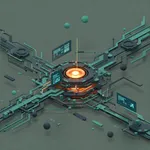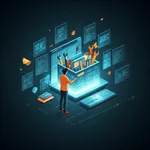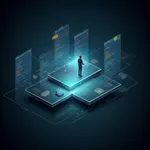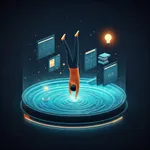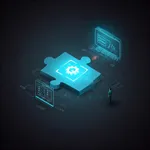Learning & Growth
Strategies for continuous improvement and effective problem-solving in tech.
The Evolution of Computer Science:
From Mysticism to Pragmatism
For over 30 years, computer science has been my passion. From the early days of theoretical and applied disciplines to today’s vast array of technologies, I’ve seen the field transform dramatically. While it’s never been easier to learn, I’ve noticed a decline in foundational knowledge. In my view, building good software is both an art and a science, requiring a deep understanding of the tools and systems we use. Pragmatism, efficiency, and a focus on the end-user experience have always guided my work. In this article, I’ll reflect on the evolution of computer science, the importance of staying curious, and why tailored, thoughtful solutions are more crucial than ever in an AI-driven world.
The Beauty of Versatility in Software Development
One of the most exciting aspects of software development is its sheer versatility. Whether it’s frameworks, programming languages, architectural concepts, or development paradigms, there’s always something new to learn. Yet, too often, the focus shifts to debates over which tool or approach is ‘best.’ In reality, the right solution depends on the specific problem at hand. I’ve learned that careful consideration and openness to alternative perspectives are key to making informed decisions. In this article, I’ll discuss why embracing the diversity of software development and learning from others can lead to more innovative and effective solutions.
Stop Chasing Hype:
Stick to What Works
In the fast-paced world of software development, it’s easy to get swept up in the latest trends and tools. Every day, there’s a new framework, library, or methodology claiming to be the ultimate solution. But constantly chasing these trends can leave you stuck in an endless cycle of experimentation without ever delivering results. Instead, focus on what you know works. Leverage your experience with proven tools and methods to build stable, successful solutions. In this article, I’ll discuss why it’s important to stay informed about new technologies but avoid the trap of hype-driven development.
Bridging the Gap Between Theory and Practice in Computer Science
When I started studying computer science in 1998, the field was far less specialized than it is today. Now, with degrees in information technology, software engineering, and countless boot camps, the landscape has expanded dramatically. Yet, there’s often a disconnect between theoretical knowledge and practical application. While theory provides a solid foundation, it’s the ability to adapt, question trends, and solve specific problems that truly defines success in this field. In this article, I’ll discuss why understanding both theory and practice is essential, and how you can become the bridge that creates innovative, real-world solutions.
Why New Isn’t Always Better
in Software Development
In the fast-paced world of software development, it’s easy to assume that newer is always better. But the reality is often more nuanced. Whether it’s programming languages, architectures, or infrastructure, the latest trend isn’t always the right fit for your needs. Instead of drastic overhauls, sometimes a small adjustment in your workflow or a niche tool can deliver better results. The key is to focus on modular, maintainable solutions and understand the strengths and weaknesses of each approach. In this article, I’ll discuss why curiosity, careful evaluation, and a willingness to explore lesser-known tools can lead to more effective and tailored solutions.
Learning by Doing:
The Key to Mastering New Skills
Learning something new—whether it’s a programming language, framework, or design pattern—requires more than just reading about it. While understanding the theory and basics is essential, nothing beats hands-on experience. Start by researching the topic, learning its purpose, and seeing how others use it. Then, dive into small practical projects to get a feel for how it works. Don’t forget to seek out experienced individuals for their insights and opinions. Remember, your first approach won’t be perfect, but it’s a crucial step in the learning process. In this article, I’ll share why balancing theory and practice is the key to mastering new skills.
Choosing the Right Tools for the Right Problems
Software development is all about solving problems, but not every tool or technology is a one-size-fits-all solution. From programming languages to frameworks and architectures, the choices are endless, and each comes with its own strengths and limitations. Writing an online shop in C or using Go for kernel development might sound absurd, but it highlights the importance of matching tools to tasks. The real challenge lies in understanding the problem, questioning outdated routines, and choosing the right tools for the job. In this article, I’ll discuss why a tailored approach is essential for creating effective solutions without unnecessary compromises.
